Resources for Bluetooth Low Energy
Published:
This page summarizes resources for Classic Bluetooth and Bluetooth Low Energy. It is still under active update.
Overview
There is some confusion about the Bluetooth. Generally speaking, Bluetooth 1.0 - 3.0 includes classic Bluetooth. Bluetooth 4.0 starts to use Bluetooth Low Energy (BLE). A brief introduction about their difference can be found at link1, link2 and link3.
New features of Bluetooth 5 can be found here. The full and latest specification, v5.2 (released in 2019) can be downloaded here.
Unless otherwise highlighted, the following descriptions apply to BLE, which might not be correct for classic Bluetooth.
Tutorial
Network Architecture
- Point-to-Point and Point-to-Multipoint Connection Topology (Both Bluetooth classic and BLE)
- Broadcast Connection Topology (BLE only)
- Mesh Connection Topology (BLE only)

Figure from https://uk.mathworks.com/help/comm/ug/bluetooth-mesh-networking.html.
Protocol Overview
Visit MATLAB Bluetooth Protocol Stack for a detailed introduction about the Bluetooth and BLE protocol, and a mapping between them and the OSI model.

Figure from https://uk.mathworks.com/help/comm/ug/bluetooth-protocol-stack.html.
Some brief introduction of the protocol can be found at the Microchip Developer Center. The BLE protocol stack consists of
- Controller (Physical Layer and Link Layer)
- Host
- Application
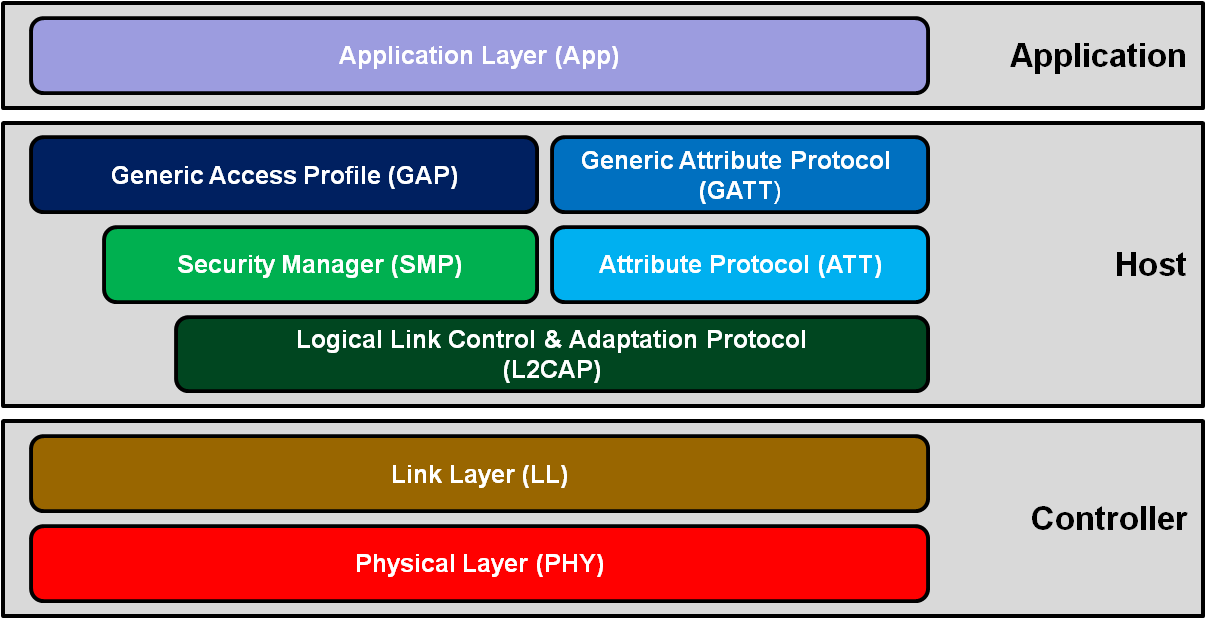
Figure from https://microchipdeveloper.com/wireless:ble-introduction.
Physical Layer
Some key features of the BLE physical layer
- 2.4GHz ISM band. The band between 2.402 GHz to 2.4835 GHz is divided into 40 channels with 2 MHz channel spacing, $f_k = 2402 + k*2 MHz, k = 0, 1, …, 39$
- The 40 channels are divided into advertising channels (Ch. 37, 38, and 39) and 37 data channels (Ch. 0-36).
- Gaussian Frequency-Shift Keying (GFSK).
- Adaptive Frequency Hopping for data channels. The channel selection algorithms can be found in Section 4.5.8 of Part B vol. 6. There are two algorithms defined and the algorithm#1 selects the channel as $f_{n+1} = (f_n + hop)$ mod 37, where hop ranges from 5-16.

Figure from https://microchipdeveloper.com/wireless:ble-introduction.
Preamble
The preamble defined in BLE v5.2:
- LE IM packets (8 bits): 10101101, or 01010101
- LE 2M packets (16 bits): 1010110110101101, or 0101010101010101 Preamble is used for frequency synchronization, symbol timing and automatic gain control. Visit Page 2865 Section 2.1.1 Vol 6, Part B of the Bluetooth Core Specification v5.2.
Link Layer
- Advertising and Scanning
- Connection
- Network Topology - Piconet
- Security - AES - CCM
Advertising Channel
Channel 37, 38 and 39
- Device Discovery
- Connection Establishment
- Broadcast Transmissions
Data Channel
Channel 0-36
- Data transmissions
- Frequency hopping is used to select different channels.
Packet Type
The same packet format for both
- Advertising channel packets
- Data channel packets
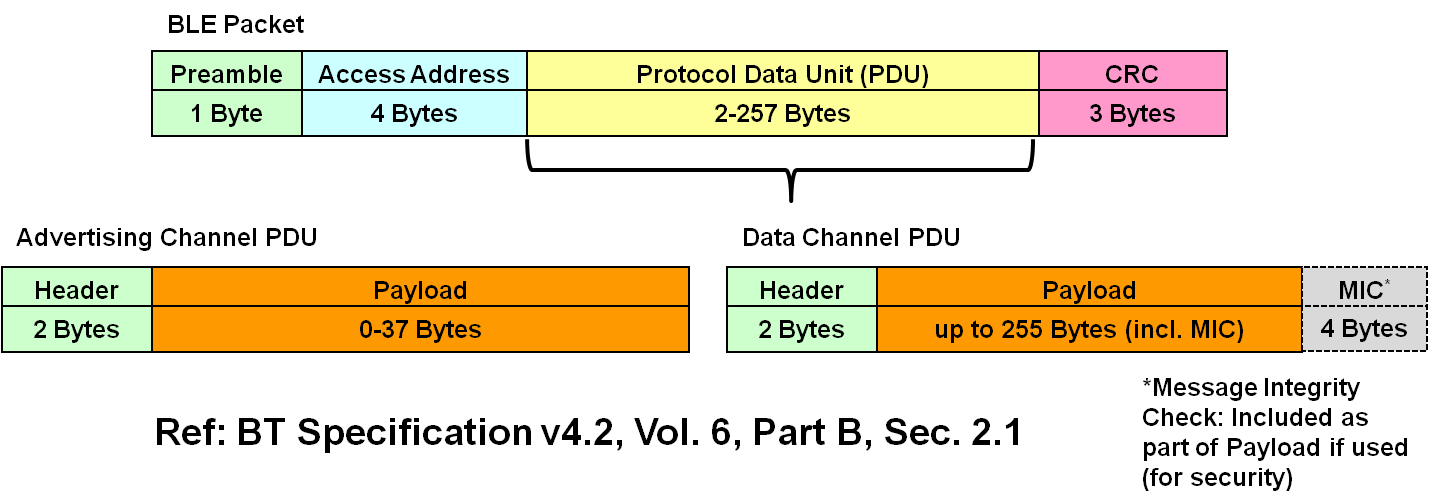
BLE Packet Type. Figure from https://microchipdeveloper.com/wireless:ble-link-layer-packet-types
Discovery Process
- Advertising interval: 20 ms
- Scan interval: 50 ms
- Scan window: 25 ms
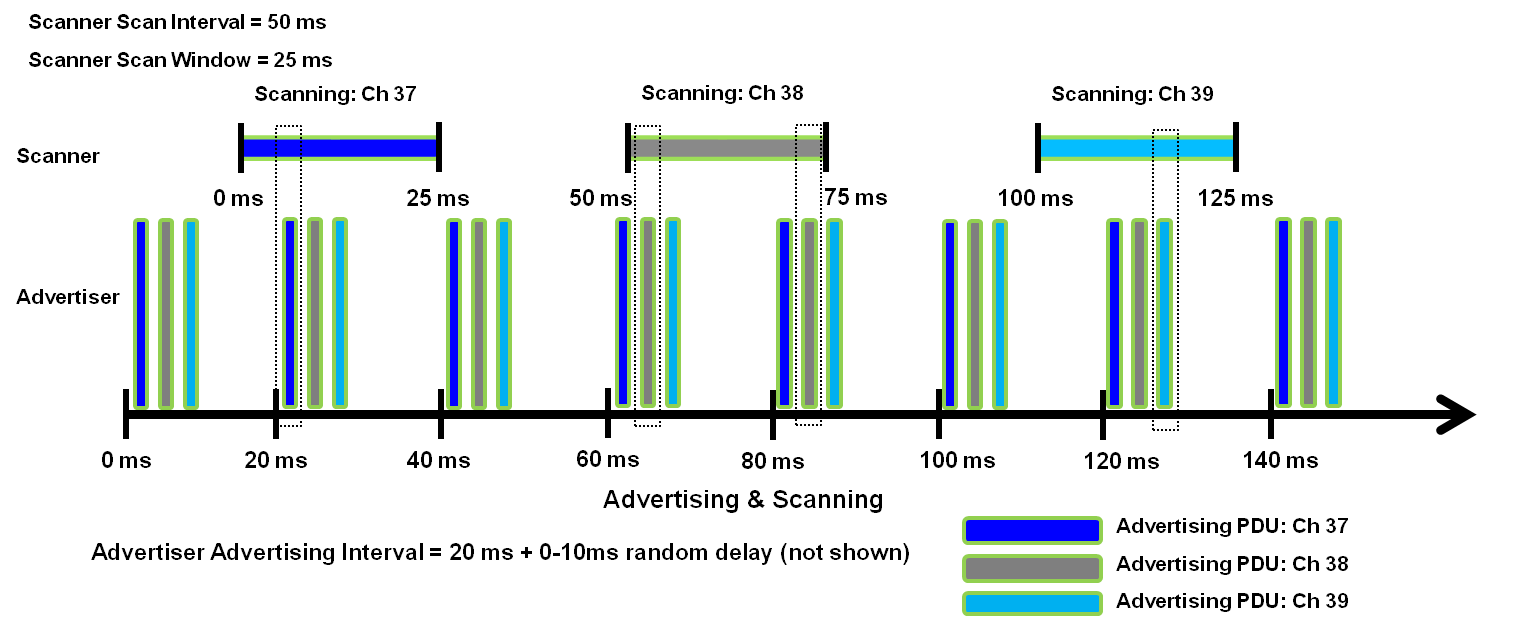
Advertising and Scanning. Figure from https://microchipdeveloper.com/wireless:ble-link-layer-discovery
Connection Process
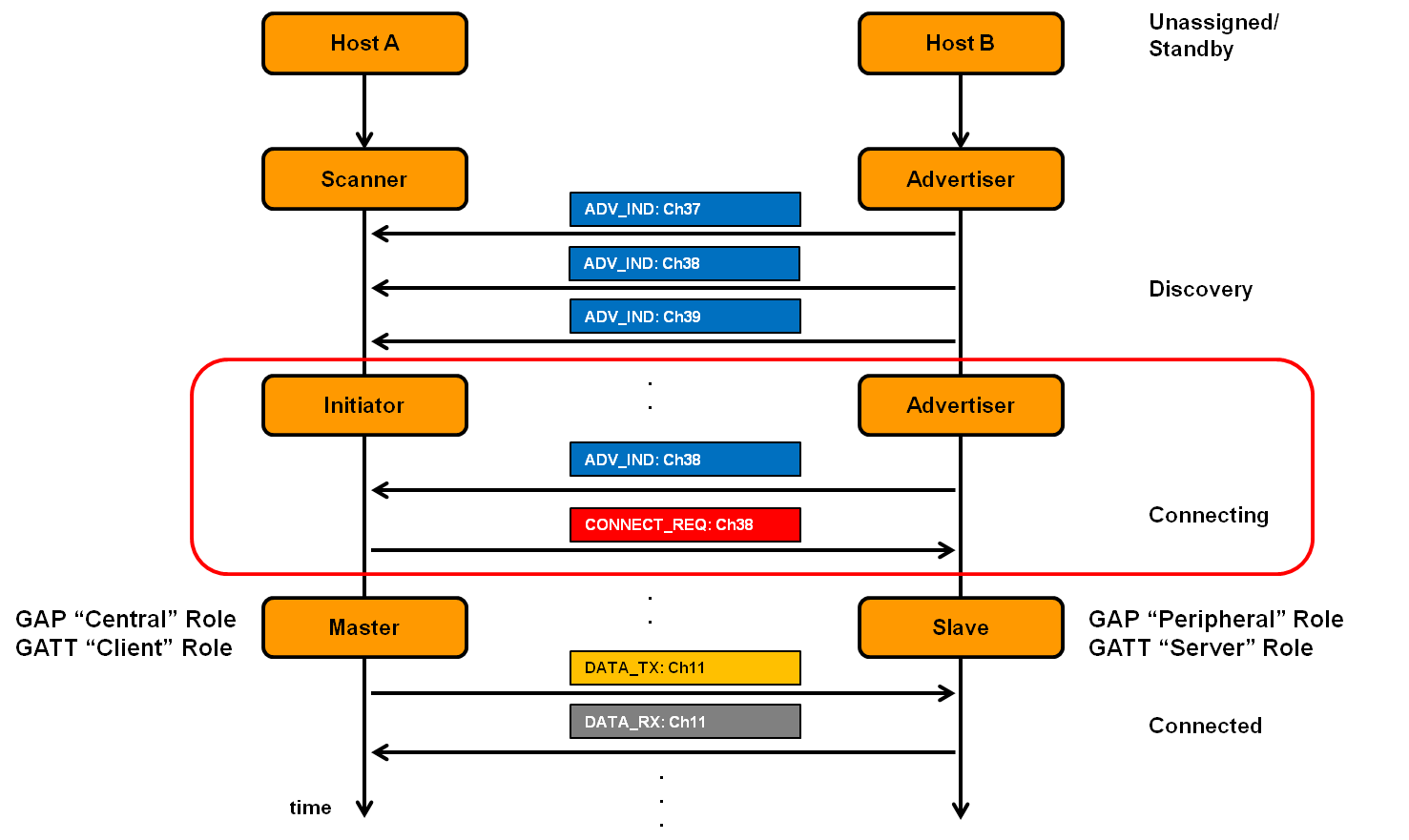
Connection establishment. Figure from https://microchipdeveloper.com/wireless:ble-link-layer-connections
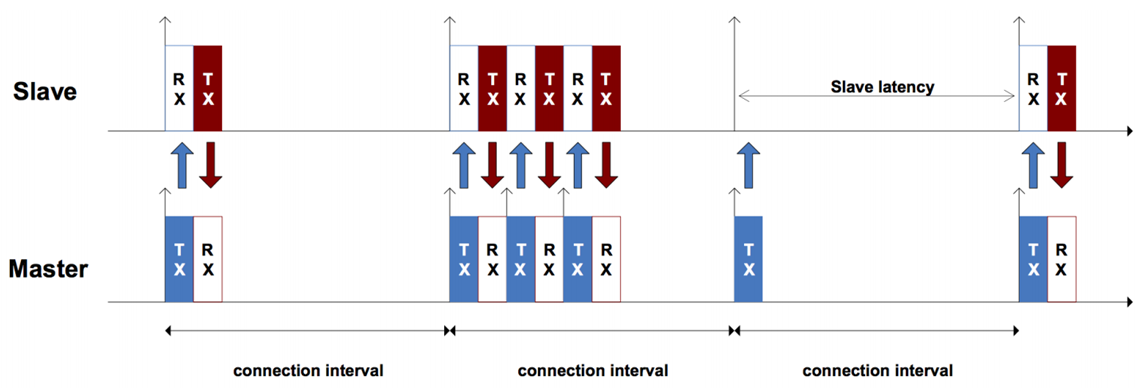
Connected phase. Figure from https://microchipdeveloper.com/wireless:ble-link-layer-connections
Bluetooth Stack and Development Kit
Linux
- C language: BlueZ. Check An Introduction to Bluetooth Programming about its usage.
- Python: bluepy.
Micropython
Note: The module is still under development and its classes, functions, methods and constants are subject to change. It only supports the basic BLE functions.
Texas Instruments
- TI BLE SDK support Bluetooth 4.2 and Bluetooth 5.
- TI BLE-Stack for Bluetooth 4.2 API Documentation 3.01.00.07
- SimpleLink™ CC26x2 SDK BLE5-Stack User’s Guide.
- SimpleLink™ CC13x2 / CC26x2 SDK BLE5-Stack User’s Guide.
- Supported TI devices can be found here.
Scapy for Bluetooth
Matlab Bluetooth Support
Matlab has also provided simulation support for Bluetooth and BLE. Visit Communications Toolbox Library for the Bluetooth Protocol support package for more information.
